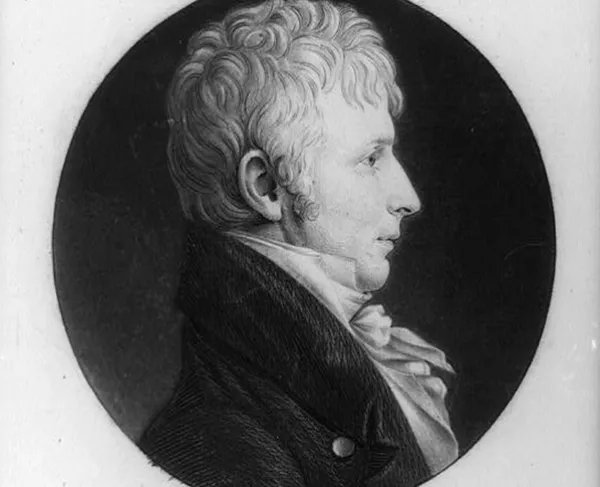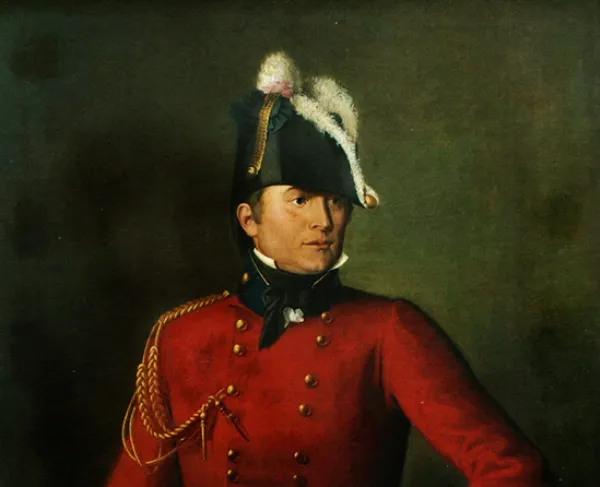
Bladensburg
Maryland | Aug 24, 1814
The Battle of Bladensburg was fought in Maryland on August 24, 1814 and this British victory left Washington D.C. perilously open to British invasion. The embarrassing defeat of American forces under General William Winder allowed British Army Officer Robert Ross’ men to subsequently march into nearby Washington D.C. and set fire to public buildings, including the presidential mansion (later to be rebuilt and renamed as the White House) over August 24th and 25th. Devastating American morale by destroying the very symbols of American democracy and spirit, the British sought to swiftly end an increasingly unpopular war.
Though neither side had gained a clear advantage in the first two years of the War of 1812, that changed in the spring of 1814 when Britain was able to disentangle itself from fighting France in the Napoleonic Wars. After Napoleon’s exile in April 1814, British forces could be replenished with thousands of veterans. These soldiers were different than the soldiers Americans had faced in Upper Canada; these men had fought against Napoleon and his Imperial Guard and wanted a quick end to this war against a young country.
British military leaders drew up a plan to decisively end the war, crafting a strategy to take control of the New England states and focus an attack on New Orleans, thereby separating north and south by cutting off critical transportation routes in both regions. In addition to destroying American trade, the British also planned to degrade American morale by arranging attacks on coastal cities such as Washington, Baltimore, Charleston and Savannah.
With this in mind, General Robert Ross arrived in Maryland, fresh from the Napoleonic Wars. Despite having recently been wounded in February at the Battle of Orthes, Ross returned to take charge of British troops on the east cost. Ross marched his 4,500 men from Benedict, Maryland towards Washington, D.C. with a goal of weakening American resolve.
American General William Winder organized his forces, believing that Washington, D.C. and Baltimore would need to be defended. Because Bladensburg, just northeast of D.C., was key to both Washington and Baltimore’s defense, Winder deployed across the roads that led into the young nation’s capital. Though Winder had around 6,500 men at his disposal, most of his men at Bladensburg were poorly trained militia and their resolve would crumble in the face of the war-weary British.
Though Americans positioned themselves well against an attack with artillery covering a bridge over the eastern branch of the Anacostia River, they were overwhelmed when British attacked at noon on August 24th. Fording the river above the bridge and beating back troops who defended the bridge, British General Ross’ 4,500 men steadily advanced against American artillery and rifle fire, gaining control of the west bank. Under heavy British pressure, the left flank of the American line of defense crumbled. As the left flank was enveloped, Americans fled the scene. Their general, Winder, had not prepared a plan for American retreat and his panicked men ran from the battle instead of maneuvering in a controlled retreat to defend Washington D.C. against impending attack. With American forces scattered, the road to America’s capital was now wide open.
As the British marched into Washington in 1814, they held in their memory the bitter date of April 27th1813—the day Americans had burned of the Canadian capital, York. They carried vengeful appetites as they entered Washington, D.C. the evening of August 24th 1814.
President Madison and his cabinet had fled the city, Dolly Madison and White House slave Paul Jennings famously saving critical relics of their new republic, among them a portrait of George Washington. It was a good thing that the first lady and Jennings saved these symbols of American democracy as British forces wasted no time in setting the presidential mansion, the Capitol, the Treasury and the War Office ablaze in the evening of August 24th. The burning of Washington went down in history as the only foreign attack on the nation’s capital until the terrorist attacks on September 11, 2001.
The embarrassing defeat at Bladensburg, coupled with the destruction of Washington, D.C., depleted American morale. For both sides, the Battle of Bladensburg helped usher in a conclusion to a costly and frustrating war.
Bladensburg: Featured Resources
Related Battles
6,500
4,500
200
250















